B0041VYHGW EBOK (77 page)
Authors: David Bordwell,Kristin Thompson

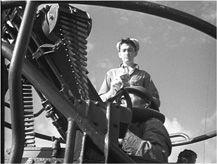
5.96 A low-angle view places sailors and a machine gun against the sky in
They Were Expendable.
The frame can be more or less level—that is, parallel to the horizon. If the framing is tipped to one side or the other, it’s said to be
canted
. Canted framing is relatively rare, although a few films make heavy use of it, such as Orson Welles’s
Mr. Arkadin,
Carol Reed’s
The Third Man,
and Wong Kar-wai’s
Fallen Angels
(
5.97
).
In Christopher Maclaine’s
The End,
a canted framing makes a steep street in the foreground appear level and renders the houses in the background grotesquely out of kilter
(
5.98
).
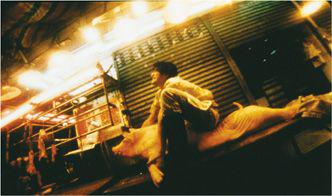
5.97 A canted framing in
Fallen Angels.
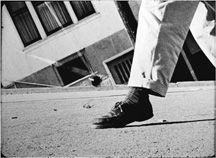
5.98 A startling canted framing in
The End.
The framing usually gives us a sense of being stationed at a certain height in relation to the settings and figures. Camera angle is, of course, partly related to height: To frame from a high angle entails being at a vantage point higher than the material in the image. But camera height is not simply a matter of camera angle. For instance, the Japanese filmmaker Yasujiro Ozu films from a low height with a straight-on angle (
4.142
,
6.130
,
6.131
), giving his work a distinctive visual style.
The framing of the image stations us at a certain distance. Framing supplies a sense of being far away or close to the mise-en-scene of the shot. This aspect of framing is usually called
camera distance.
In presenting the terms used for various distances, we’ll use the standard measure: the human body. Our examples are all from
The Third Man.
In the
extreme long shot
, the human figure is lost or tiny
(
5.99
).
This is the framing for landscapes, bird’s-eye views of cities, and other vistas. In the
long shot
, figures are more prominent, but the background still dominates
(
5.100
).
Shots in which the human figure is framed from about the knees up are called
medium long shots
(
5.101
).
These are common, since they permit a nice balance of figure and surroundings.
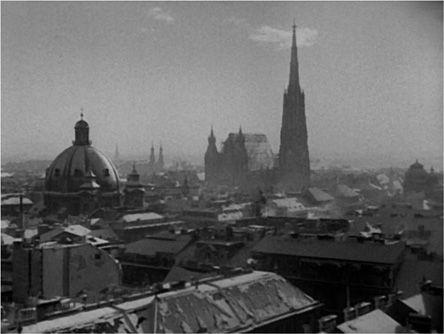
5.99
The Third Man:
extreme long shot.
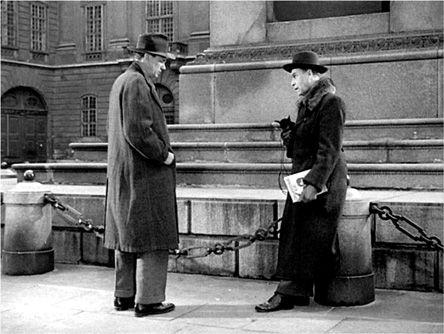
5.100 Long shot.
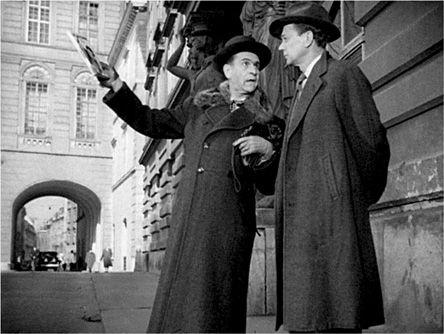
5.101 Medium long shot.
The
medium shot
frames the human body from the waist up
(
5.102
).
Gesture and expression now become more visible. The
medium close-up
frames the body from the chest up
(
5.103
).
The
close-up
is traditionally the shot showing just the head, hands, feet, or a small object. It emphasizes facial expression, the details of a gesture, or a significant object
(
5.104
).
The
extreme close-up
singles out a portion of the face or isolates and magnifies an object
(
5.105
).
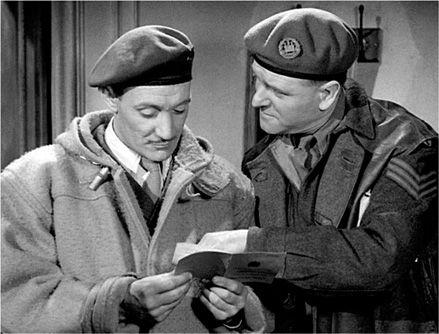
5.102 Medium shot.
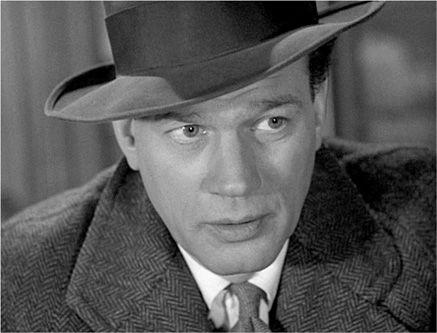
5.103 Medium close-up.
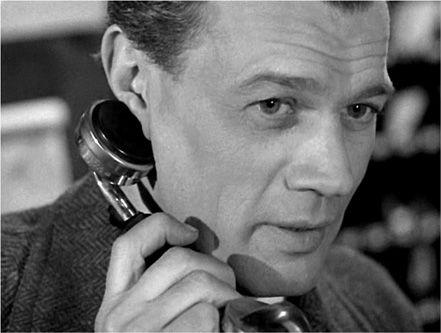
5.104 Close-up.
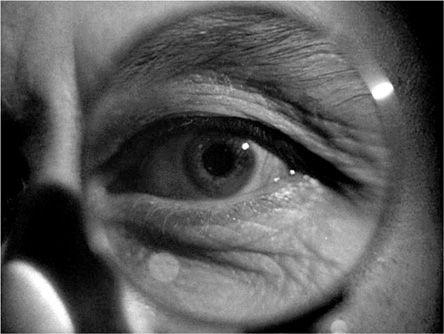
5.105 Extreme close-up.
Note that the size of the photographed material within the frame is as important as any real camera distance. From the same camera distance, you could film a long shot of a person or a close-up of King Kong’s elbow. We would not call the shot in
5.106
(from
La Passion de Jeanne d’Arc)
a close-up just because only Jeanne’s head appears in the frame; the framing is that of a long shot because in scale her head is relatively small. (If the framing were simply adjusted downward, her whole body would be visible.) In judging camera distance, the relative proportion of the material framed determines how we identify the shot.
